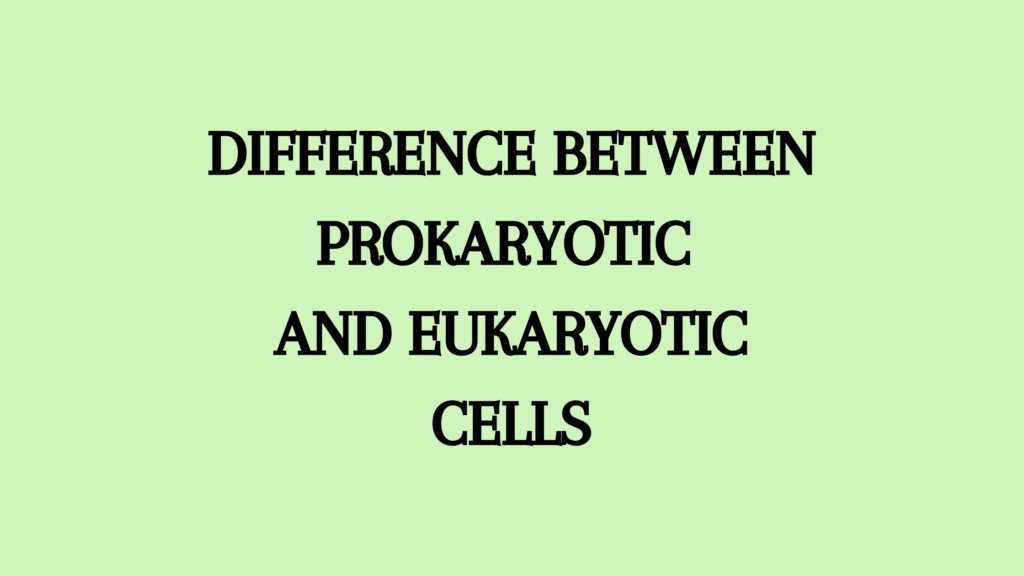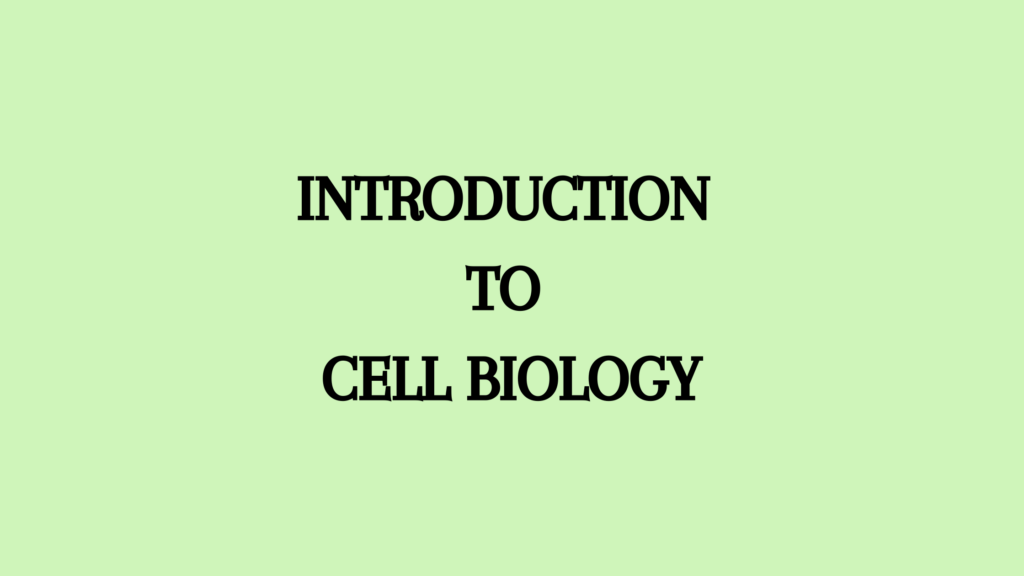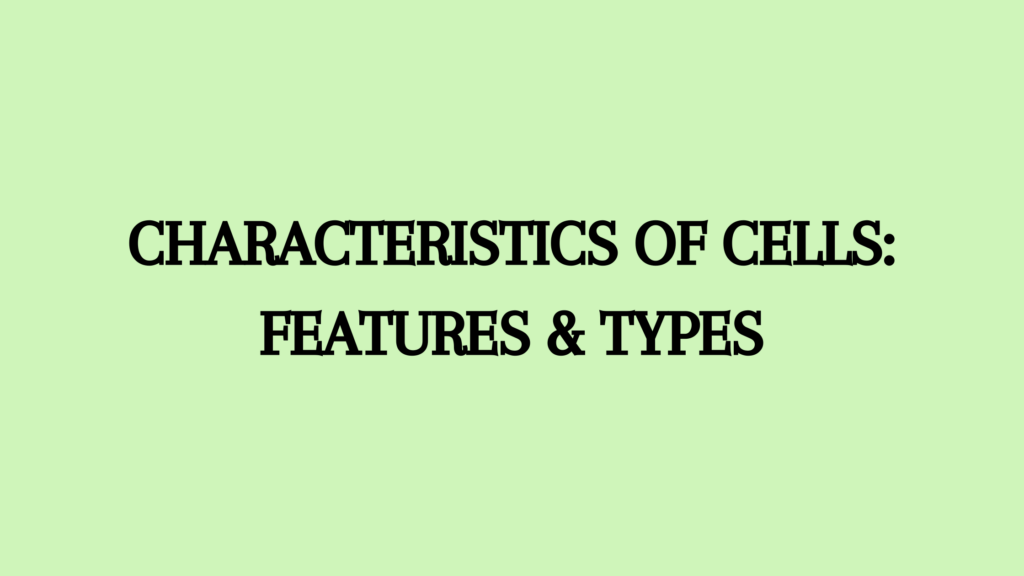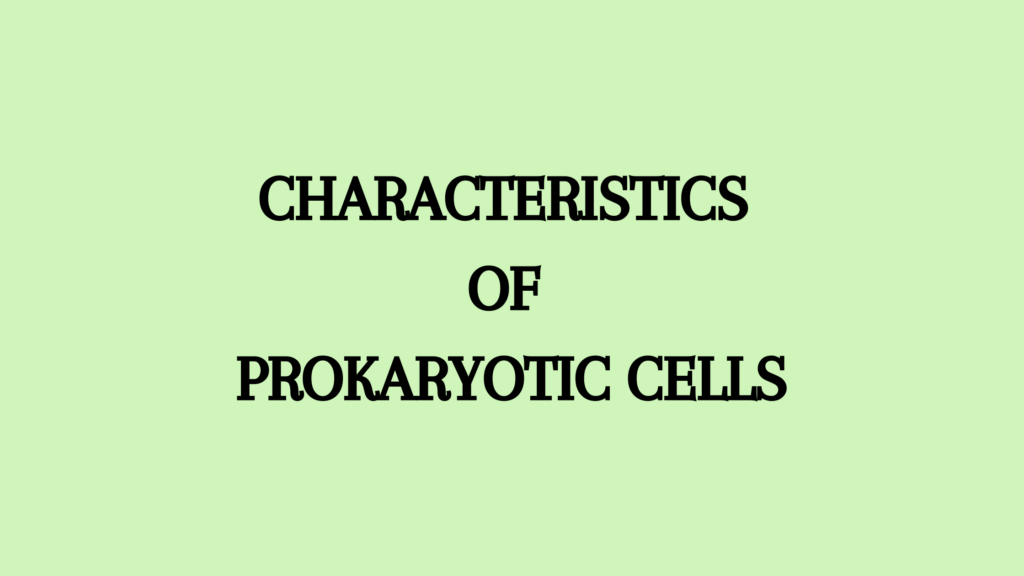Prokaryotic and eukaryotic cells are the main two types of cells. The former are single cells while eukaryotic cells are part of multicellular organisms. Various features distinguish between prokaryotic and eukaryotic cells. However, they still share some similar features.
- They contain ribosomes, genetic material, a cytoplasm, and plasma membranes.
- The cytoplasm has cytosol where the cellular activities take place.
- Both prokaryotes and eukaryotic cells have a plasma membrane that protects the cell which allows only the transportation of materials in or out of the cells.
Distinguish Between Prokaryotic and Eukaryotic Cells
Here are the major features that distinguish between prokaryotic and eukaryotic cells.
| No. | Prokaryotic Cells | Eukaryotic Cells |
| 1. | Prokaryotic cell is a single membrane system. | Eukaryotic cell is a double membrane system. |
| 2. | Endocytosis ( Pino and Phago) and exocytosis do not occur | Cell wall surrounds the plasma membrane in some protists, fungi and all plants. It is composed of chitin in most fungi and cellulose in others. |
| 3. | Cell membrane bears respiratory enzymes. | Cell membranes lack respiratory enzymes. |
| 4. | Cell membranes may infold to form mesosomes or photosynthetic lamellae. The latter occur free in the cytoplasm. | Cell membranes do not form mesosomes or photosynthetic lamellae. Thylakoid, if present, occurs within the chloroplast. |
| 5. | Cell membrane helps in distributing replication products of the chromosomes between daughter cells. | The cell membrane has no role in distributing replication products of the chromosomes between daughter cells. |
| 6. | Cytoplasm lacks organelles ( ER, mitochondria, Golgi apparatus, centrosome, microfilaments, microtubules etc. ) except ribosomes. | The cytoplasm contains ER, mitochondria, Golgi apparatus, centrosome, microfilaments, microtubules etc. besides ribosomes. |
| 7. | Sap vacuoles are lacking, gas vacuoles may occur. | Sap vacuoles are common. |
| 8. | Ribosomes lie free in the cytoplasm or joint to the cell membrane. | Ribosomes may lie free or bound to the ER and nuclear envelope. |
| 9. | There are no streaming movements of the cytoplasm. | Cytoplasm shows streaming movements. |
| 10. | Meiosis, gamete formation, and true fertilization occur in most cases during sexual reproduction. | Endocytosis and exocytosis occur in many protists and animals. |
| 11. | Has a shorter cell cycle of just 20 to 60 minutes. | The cell cycle is long and takes 12 to 24 hours to complete. |
| 12. | Mitotic spindle is not formed in cell division. | Mitotic spindle is formed in cell division. |
| 13. | Protein synthesis occurs in the cytoplasm, mitochondria, and plastids. | There is no process comparable to meiosis, gamete formation, or true fertilization. |
| 14. | Cells are haploid. | Cells are typically diploid, haploid cells also occur. |
| 15. | DNA occurs in the nucleus, mitochondria, and chloroplast. | Transcription occurs in the nucleus and translation occurs in cytoplasm. |
| 16. | mRNA does not need processing. | mRNA needs processing. |
| 17. | Protein synthesis takes place in the cytoplasm. | Transcription and translation occur in the cytoplasm. |
| 18. | Nuclear material is not enveloped and lies directly in the cytoplasm. | The nuclear material is enclosed by a nuclear envelope to form a nucleus, distinct from the cytoplasm. |
| 19. | The nucleoid contains a single chromosome. | The nucleus contains two or many chromosomes. |
| 20. | There is no nucleolus. | One or more nucleoli is occurring within the nucleus. |
| 21. | DNA is circular and there is no protein coat. | Nuclear DNA is linear with a protein coat. Extranuclear DNA is circular and naked. |
| 22. | DNA occurs in the cytoplasm only. | Occur in algae other than BGA, protists, plants, and animals. |
| 23. | DNA can code for fewer proteins. | DNA codes for far many proteins. |
| 24. | Replication of DNA occurs continuously throughout the cell cycle. | Replication of DNA occurs only during the ‘S’ phase of the cell cycle. |
| 25. | Flagella when present are simple and made of flagellin. | Flagella if present are complex and have the pattern of microtubules formed of protein tubulin. |
| 26. | Plasmids and pili occur in many prokaryotic cells. | Plasmids and pili are absent in eukaryotic cells. |
| 27. | Organic compounds can be formed from inorganic compounds. | This is not possible. |
| 28. | Most prokaryotes are non-sexual organisms. | Most eukaryotes are sexual organisms. |
| 29. | Prokaryotic cells are smaller and have much less DNA than eukaryotic cells. | Eukaryotic cells are relatively large ( 10-15 μm ) and have much more DNA than prokaryotic cells. |
| 30. | Occurs in bacteria, BGA, mycoplasma, rickettsias and spirochaetes. | Occurs in bacteria, BGA, mycoplasma, rickettsias, and spirochaetes. |




